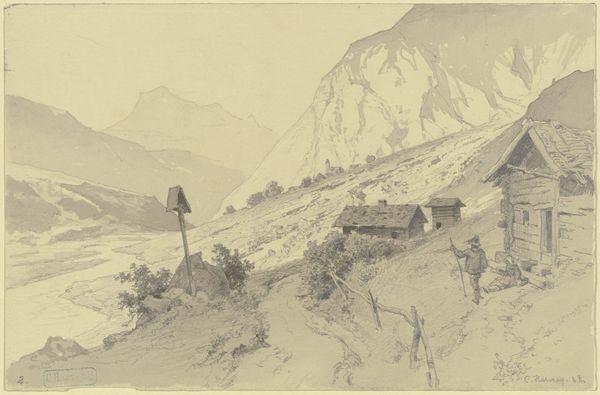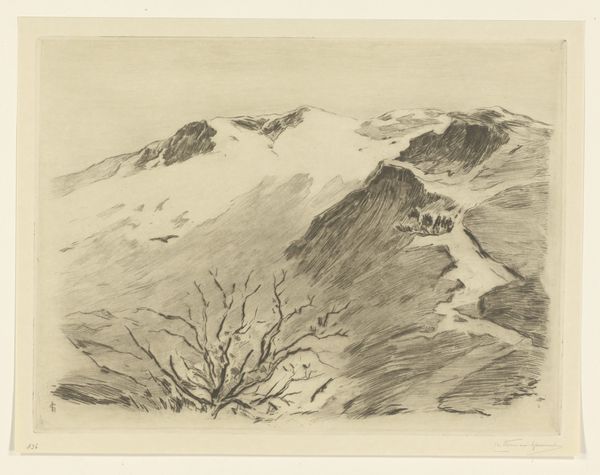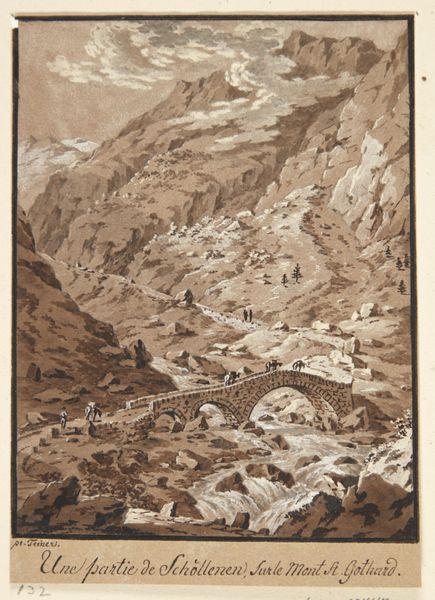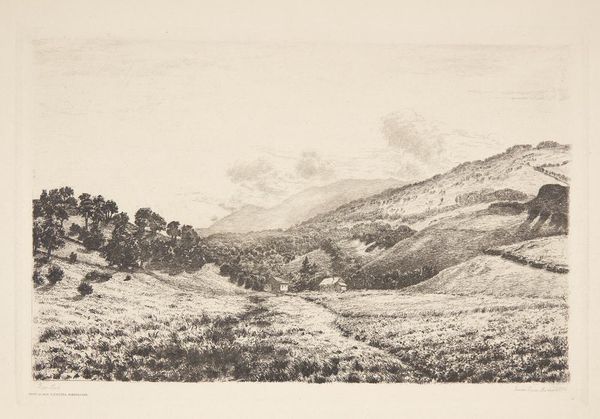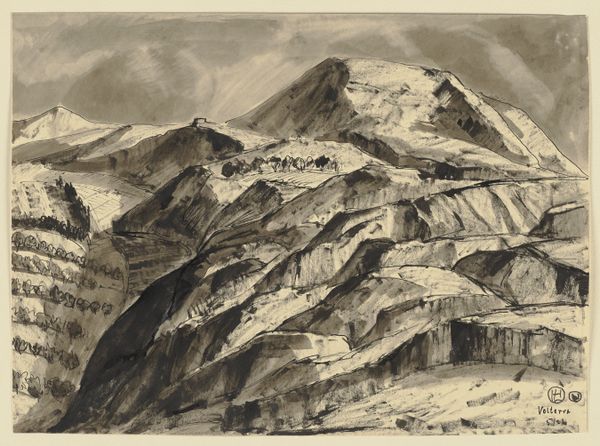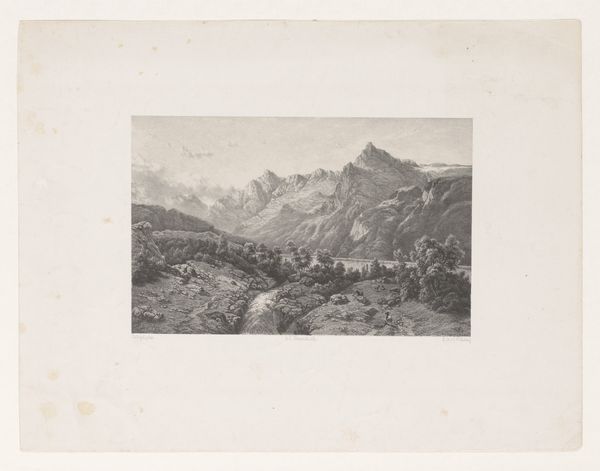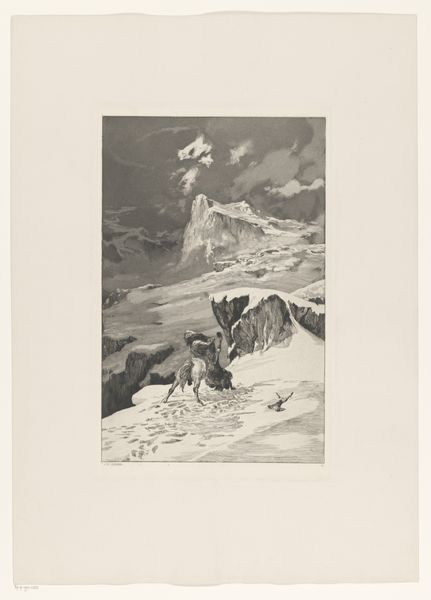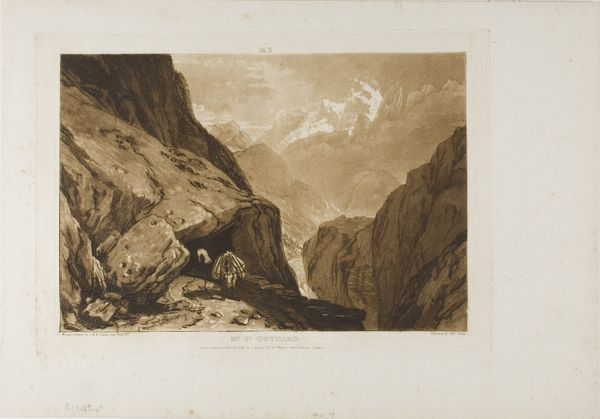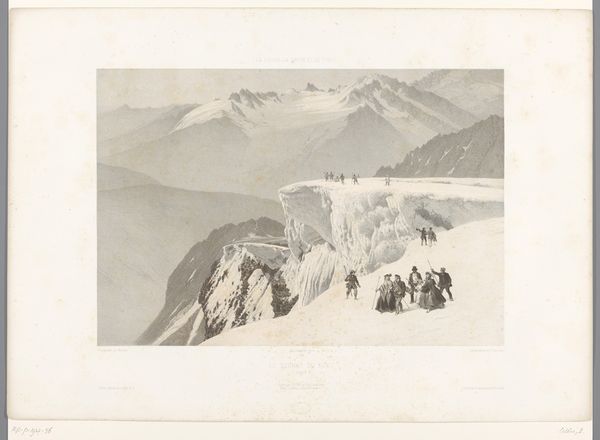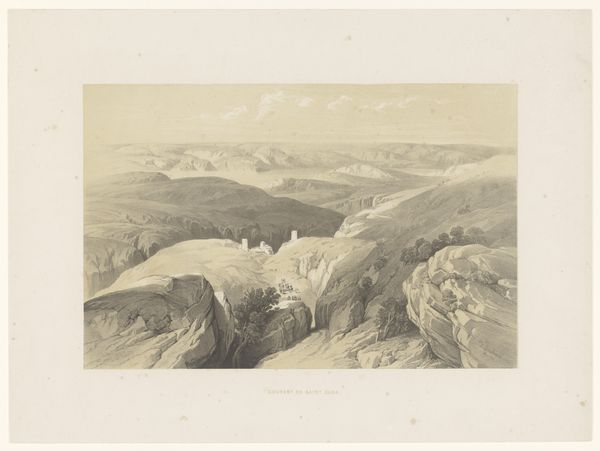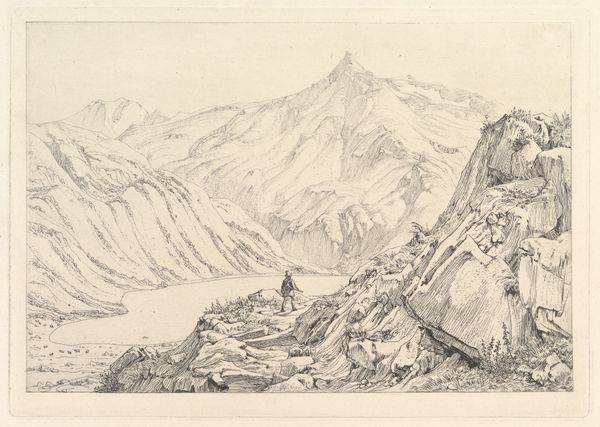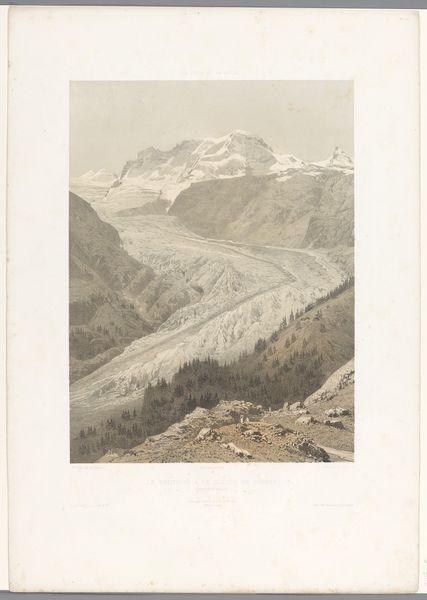
print, etching
# print
#
etching
#
landscape
#
etching
#
realism
Dimensions: plate: 12.5 x 20.1 cm (4 15/16 x 7 15/16 in.) sheet: 19.8 x 30.4 cm (7 13/16 x 11 15/16 in.)
Copyright: National Gallery of Art: CC0 1.0
Curator: Here we have George Elbert Burr’s etching from around 1910, titled “Valley of the Lledr, North Wales (no.1)." Editor: My immediate sense is one of secluded peace. The composition leads the eye into the valley's depth, but that sharply angled rock formation on the right almost feels like it's blocking further entry. Curator: It's a strategic compositional choice. Burr uses the angular rocks, the trees, the play of light and shadow to direct and contain the viewer's gaze, all while demonstrating his remarkable skill in manipulating the etching needle to describe different textures. The closely packed strokes help him model light on the hill sides versus the fine strokes for distance and soft edges. Editor: Do you think Burr chose the Valley of the Lledr for its geographical significance at the time? Was there a rise in representing these landscapes as symbols of national pride, or perhaps in response to industrialization? Curator: That's precisely the type of discussion we need to consider. Around 1910, there was definitely a cultural tension regarding the idyllic versus industrialised landscape. Burr, however, approaches this theme with a more formal, less politicised touch, I would argue. While nationalism may have played a role, I feel he was more drawn to the formal challenges of depicting spatial depth and light within the etching medium itself. It is a demonstration of artistic and technical proficiency. Editor: I still can't shake the socio-political context. Considering this was produced at a time when ideas about preserving and commodifying landscape were gaining momentum, wouldn't showing this remote, unspoiled Welsh valley tap into the cultural moment, maybe even implicitly contributing to it? Curator: Perhaps so. Though it is useful to consider Burr’s training. Look at his use of line and shadow – his mastery is on full display! And these patterns create form, tone and depth—qualities essential to understand the visual impact. It provides the image's inherent expressive quality and value. Editor: So while you see a mastery of form, I see an echo of a broader cultural fascination with landscape as both an escape and a resource to be managed and, by extension, controlled. I found that aspect fascinating! Curator: A fair point. Looking closely at Burr’s technique in relation to this social narrative adds another layer to our appreciation of his work, and highlights how visual decisions contribute to these layers.
Comments
No comments
Be the first to comment and join the conversation on the ultimate creative platform.
